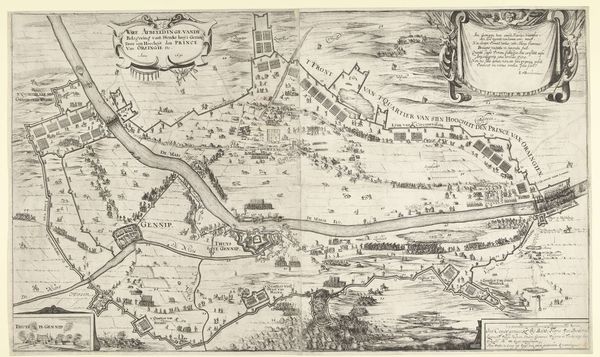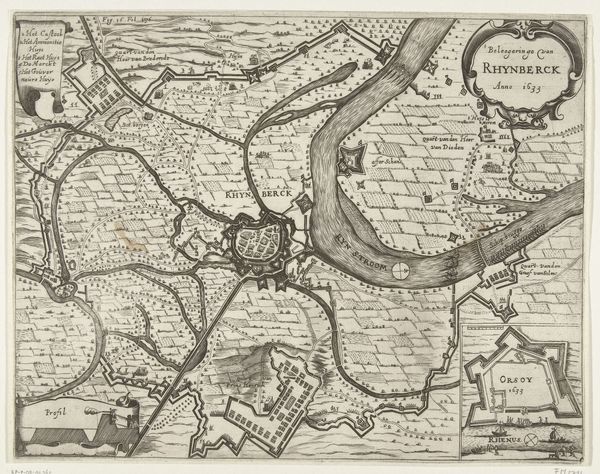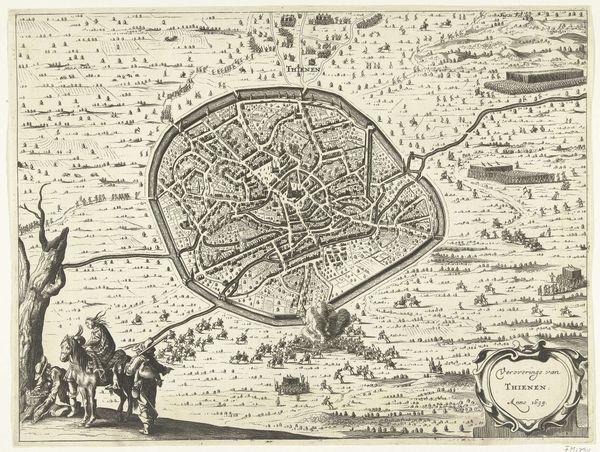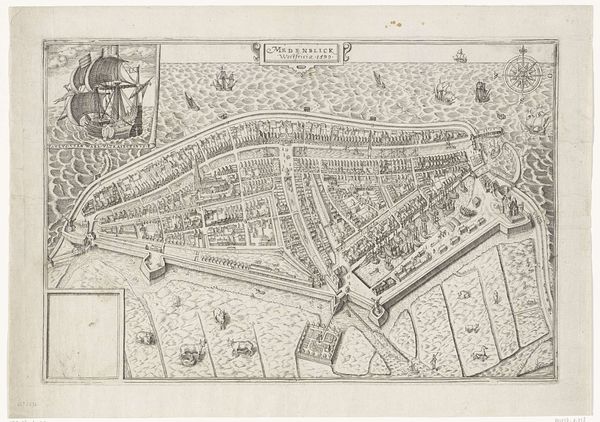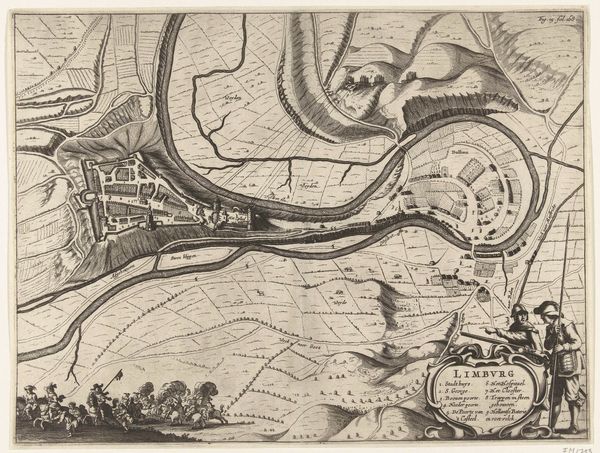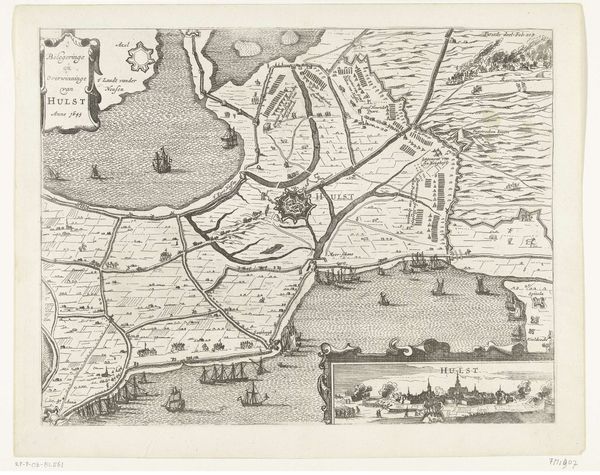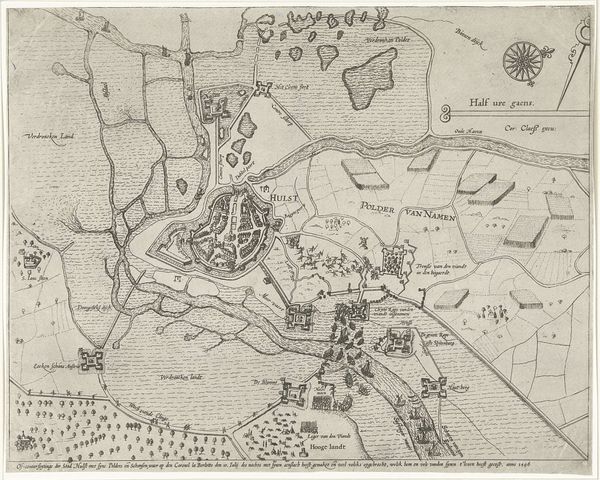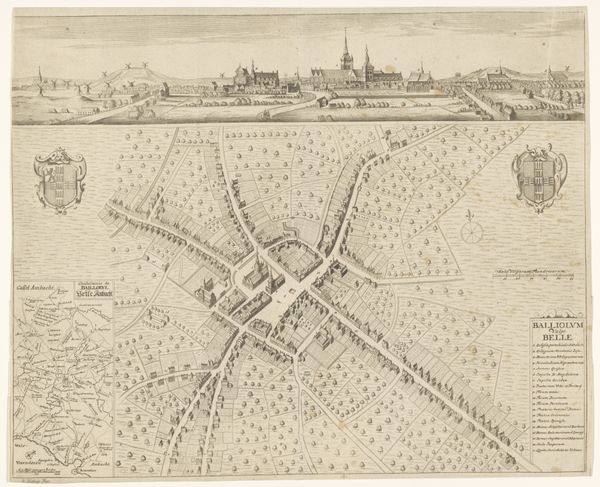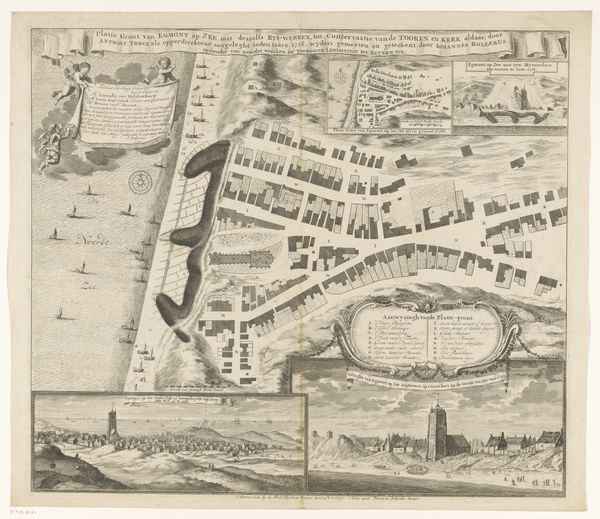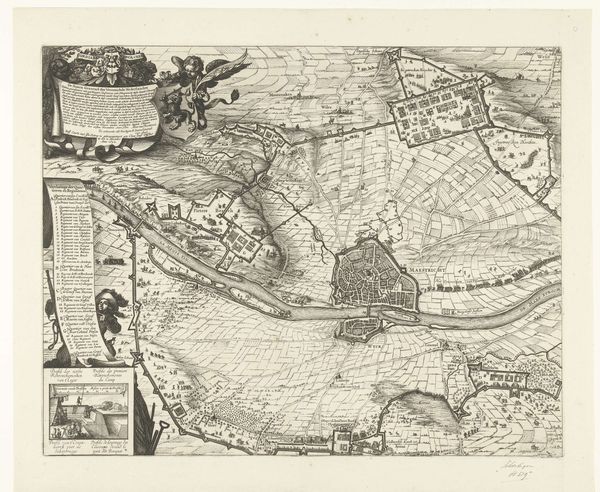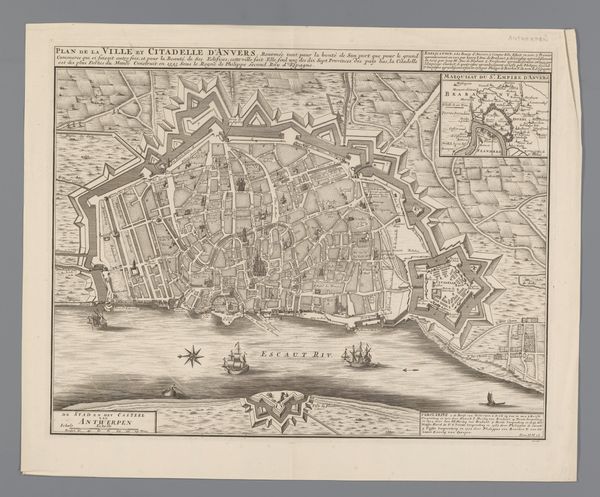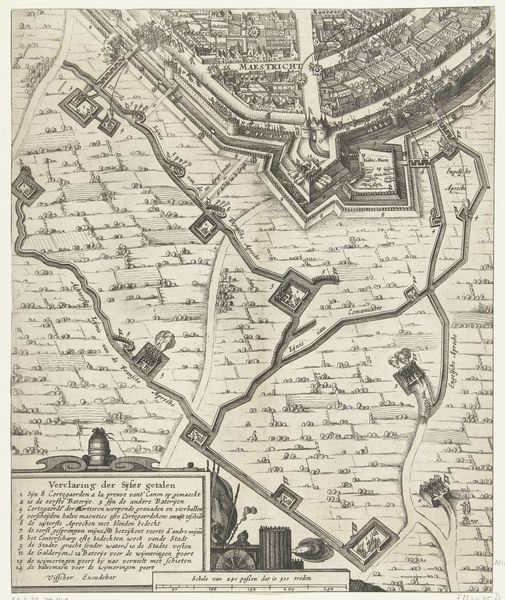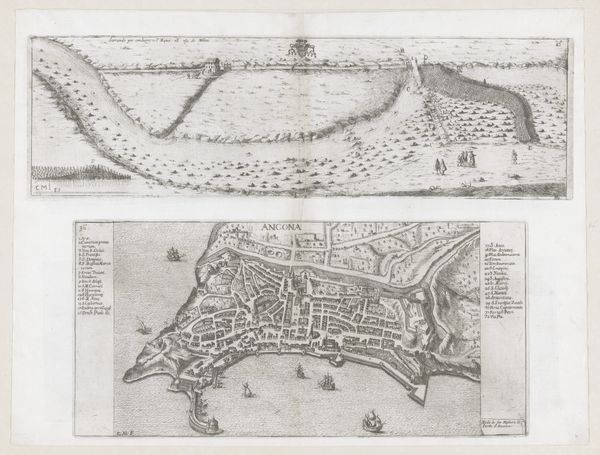
drawing, print, ink, engraving
#
drawing
#
baroque
# print
#
landscape
#
ink
#
cityscape
#
history-painting
#
engraving
Dimensions: height 275 mm, width 365 mm
Copyright: Rijks Museum: Open Domain
Editor: We're looking at "The Capture of Wesel, 1629," an engraving from sometime between 1649 and 1651 by Pieter Hendricksz. Schut. The image details a siege, but its aesthetic feels more like a map or strategic document than a dramatic history painting. What stands out to you? Curator: Well, the way it conflates cartography and military history is fascinating. It’s not just about depicting the event but about visually communicating power and control. How do you think this imagery functioned politically at the time? Editor: I imagine it served as propaganda, showcasing Dutch military prowess and solidifying their position. Curator: Precisely! Consider the role of printmaking in the 17th century. It was a relatively accessible medium, allowing for the wide dissemination of imagery. These prints helped shape public opinion and contribute to the construction of national identity. What impact do you think institutions such as the Rijksmuseum have on works like this now? Editor: By displaying it, the Rijksmuseum is turning a historical record into a work of art, and allowing the modern viewer to perhaps learn from history. Curator: Indeed. Museums actively shape how we understand and value objects. This engraving, once a tool of political communication, now becomes an artifact for historical analysis and aesthetic appreciation. And what does the Baroque aesthetic contribute to that? Editor: The intricacy and detail maybe suggest order and planning, even if warfare is typically chaotic. Curator: I concur. We can really see that in play within its imagery. Editor: That's a great point; thank you! It is incredible how much the context informs our reading of an image like this! Curator: Absolutely. I've gained a better understanding too by talking with you.
Comments
No comments
Be the first to comment and join the conversation on the ultimate creative platform.
